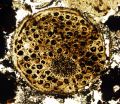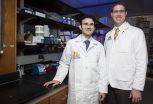(Press-News.org) DALLAS – Sept. 25, 2014 – Patients who lost more than 100 pounds and those who shed weight through bariatric surgery had the highest risk of complications from later surgical procedures to reshape their leaner bodies, a new study from UT Southwestern Medical Center shows.
The study, published in the Aesthetic Surgery Journal, compared surgical complication outcomes for 450 patients who underwent body contouring, a type of surgery to remove excess sagging fat and skin to improve body shape.
"This is one of the first large-scale studies comparing outcomes in patients losing significant amounts of weight via surgical and nonsurgical means," said Dr. Jeffrey Kenkel, Professor and Acting Chairman of Plastic Surgery at UT Southwestern, and senior author of the study. "Major weight loss was a significant risk factor for wound complications in body contouring surgery."
Of the 450 study participants, 124 lost 50 pounds or more before their surgery. Patients included men and women in all age groups who completed body contouring procedures including body lifts, tummy tucks, thighplasty, arm lifts, breast lifts, breast reduction, and liposuction.
Dr. Kenkel and his peers conducted statistical analyses to identify risk factors and to determine the probability of patients experiencing healing issues or complications after their surgery.
Patients with weight loss of more than 100 pounds were found to be at higher risk for complications, regardless of weight loss method. Furthermore, post-bariatric patients had the highest rate of complications. Gastric bypass patients were at greater risk than patients who lost weight through diet and exercise. Patients who underwent restrictive bariatric procedures, such as gastric sleeve or the Lap-Band, had the lowest risk of complications among surgical weight loss patients.
With these considerations in mind, Dr. Kenkel investigated physiological factors that make massive weight loss patients susceptible to complications, such as infection, delayed healing, ruptures, and reddening of the skin.
"In addition to identifying massive weight loss patients as a vulnerable population, these types of studies are important to help surgeons improve patient care. The data that we have collected is valuable in managing known risks and designing pre- and post-surgical treatment," said Dr. Kenkel, who holds the Rod J. Rohrich, M.D. Distinguished Professorship in Wound Healing and Plastic Surgery.
One reason why post-bariatric patients have more complications is nutrition. Following bariatric procedures, many patients consume less than 1,000 calories daily, which leads to lower protein levels and nutritional deficiencies. Their bodies adapt to their new nutritional state, which then changes when the body becomes stressed by surgery.
"It is imperative that patients account for their dietary deficiencies and prepare their bodies for surgery," said Dr. Kenkel, Director of the Clinical Center for Cosmetic Laser Treatment and Chief of Plastic Surgery at UT Southwestern University Hospitals. "Nutrition plays an important role in skin healing, collagen production, and the generation of new blood vessels, all of which are important during recovery."
To improve patient health, UT Southwestern plastic surgeons currently conduct nutritional assessments and administer protein and vitamin supplements.
"Surgeons should monitor these patients carefully and make sure their vitamin and protein supplements are complete. Daily protein supplements are vital for achieving complication rates that are in line with non-bariatric candidates," Dr. Kenkel said. "We can also enhance recovery by tailoring pre-operative care to the patient's weight loss amount and method. As our understanding of these risks advances, we are able to provide the growing number of body contouring patients the best possible circumstances for a safe recovery."
INFORMATION:
About UT Southwestern Medical Center
UT Southwestern, one of the premier academic medical centers in the nation, integrates pioneering biomedical research with exceptional clinical care and education. The institution's faculty includes many distinguished members, including six who have been awarded Nobel Prizes since 1985. Numbering more than 2,700, the faculty is responsible for groundbreaking medical advances and is committed to translating science-driven research quickly to new clinical treatments. UT Southwestern physicians provide medical care in 40 specialties to nearly 91,000 hospitalized patients and oversee more than 2 million outpatient visits a year.
This news release is available on our home page at
http://www.utsouthwestern.edu/home/news/index.html
To automatically receive news releases from UT Southwestern via email,
subscribe at http://www.utsouthwestern.edu/receivenews
Massive weight loss increases risk of complications in body-shaping surgery
2014-09-25
ELSE PRESS RELEASES FROM THIS DATE:
Natural selection causes early migration and shorter parental care for shorebirds
2014-09-25
All bird migrations are fraught with danger – from the risk of not finding enough food, to facing stormy weather, and most importantly – trying not to be eaten along the way. Raptors such as peregrine falcons (see picture) are the main predators of migratory birds, and huge flocks of congregating shorebirds can be easy pickings. In a paper, just published in Animal Migration, an open access journal by De Gruyter Open, Dr. Sarah Jamieson and her colleagues provide new evidence that shorebird species can adopt substantially different ways of dealing with this predation pressure.
It ...
Spot on against autoimmune diseases and chronic inflammations
2014-09-25
This news release is available in German.
The immune system functions as the body's police force, protecting it from intruders like bacteria and viruses. However, in order to ascertain what is happening in the cell it requires information on the foreign invaders. This task is assumed by so-called immunoproteasomes. These are cylindrical protein complexes that break down the protein structures of the intruders into fragments that can be used by the defense system.
"In autoimmune disorders like rheumatism, type 1 diabetes or multiple sclerosis as well as severe ...
Discovery may lead to better treatments for autoimmune diseases, bone loss
2014-09-25
Scientists have developed an approach to creating treatments for osteoporosis and autoimmune diseases that may avoid the risk of infection and cancer posed by some current medications.
Researchers at Washington University School of Medicine in St. Louis redesigned a molecule that controls immune cell activity, changing the molecule's target and altering the effects of the signal it sends.
Current treatments for bone loss and autoimmune disorders block these molecules and their signals indiscriminately, which over time increases the risk of infections and cancer. The ...
Fossil of multicellular life moves evolutionary needle back 60 million years
2014-09-25
A Virginia Tech geobiologist with collaborators from the Chinese Academy of Sciences have found evidence in the fossil record that complex multicellularity appeared in living things about 600 million years ago – nearly 60 million years before skeletal animals appeared during a huge growth spurt of new life on Earth known as the Cambrian Explosion.
The discovery published online Wednesday in the journal Nature contradicts several longstanding interpretations of multicellular fossils from at least 600 million years ago.
"This opens up a new door for us to shine some light ...
NCI/FDA lung cancer workshop leads to the innovatively designed clinical trials
2014-09-25
DENVER – The recent launch of two clinical trials offer innovative study designs for patients with lung cancer. These clinical trials are the direct result of a National Cancer Institute (NCI) sponsored workshop chaired by Drs. Fred R. Hirsch, Shakun Malik and Claudio Dansky- Ullman, that brought together the NCI Thoracic Malignancies Steering Committee, the US Food and Drug Administration (FDA), academicians, clinicians as well as industry and government stakeholders to discuss issues and challenges related to clinical trial design and biomarkers for lung cancer targeted-therapies.
The ...
Treatment studied to help patients 'burned to the bone'
2014-09-25
An anti-inflammatory treatment, studied in the labs of regenerative medicine specialists and trauma surgeons, may prevent what's become one of the war-defining injuries for today's troops.
Those burned by high-velocity explosive devices are at-risk for heterotopic ossification (HO), in which bone develops in places it shouldn't be, outside the skeleton, in joints, muscles and tendons. The painful condition can make it difficult to move and function and commonly affects patients who suffer burns, automobile accidents, orthopedic surgery and blast injuries and other combat ...
Live long and phosphor: Blue LED breakthrough for efficient electronics
2014-09-25
ANN ARBOR—In a step that could lead to longer battery life in smartphones and lower power consumption for large-screen televisions, researchers at the University of Michigan have extended the lifetime of blue organic light emitting diodes by a factor of 10.
Blue OLEDs are one of a trio of colors used in OLED displays such as smartphone screens and high-end TVs. The improvement means that the efficiencies of blue OLEDs in these devices could jump from about 5 percent to 20 percent or better in the near future.
OLEDs are the latest and greatest in television technology, ...
Study finds global sea levels rose up to 5 meters per century at the end of the last 5 ice age
2014-09-25
Land-ice decay at the end of the last five ice-ages caused global sea-levels to rise at rates of up to 5.5 metres per century, according to a new study.
An international team of researchers developed a 500,000-year record of sea-level variability, to provide the first account of how quickly sea-level changed during the last five ice-age cycles.
The results, published in the latest issue of Nature Communications, also found that more than 100 smaller events of sea-level rise took place in between the five major events.
Dr Katharine Grant, from the Australian National ...
Calming down immune cells could hold key to melanoma treatment
2014-09-25
Immune cells may be responsible for drug resistance in melanoma patients, according to research published in Cancer Discovery.
Cancer Research UK scientists at The University of Manchester found that chemical signals produced by a type of immune cell, called macrophages, also act as a survival signal for melanoma cells.
When the researchers blocked the macrophages' ability to make this signal - called TNF alpha - melanoma tumours were much smaller and easier to treat.
When melanoma patients are given chemotherapy or radiotherapy it causes inflammation, increasing ...
Interactive website helps lower-income smokers to stop smoking
2014-09-25
People with lower incomes attempting to quit smoking are 36% more likely to succeed if they use a new interactive website called 'StopAdvisor' than if they use a static information website, finds a randomised controlled trial led by UCL researchers. The trial was funded by the National Prevention Research Initiative, a consortium of 16 UK health research funders.
A total of 4,613 smokers took part in the study, of whom 2,142 were classified into a 'lower income' group who had never worked, were long term unemployed or from routine or manual occupations (lower socioeconomic ...





